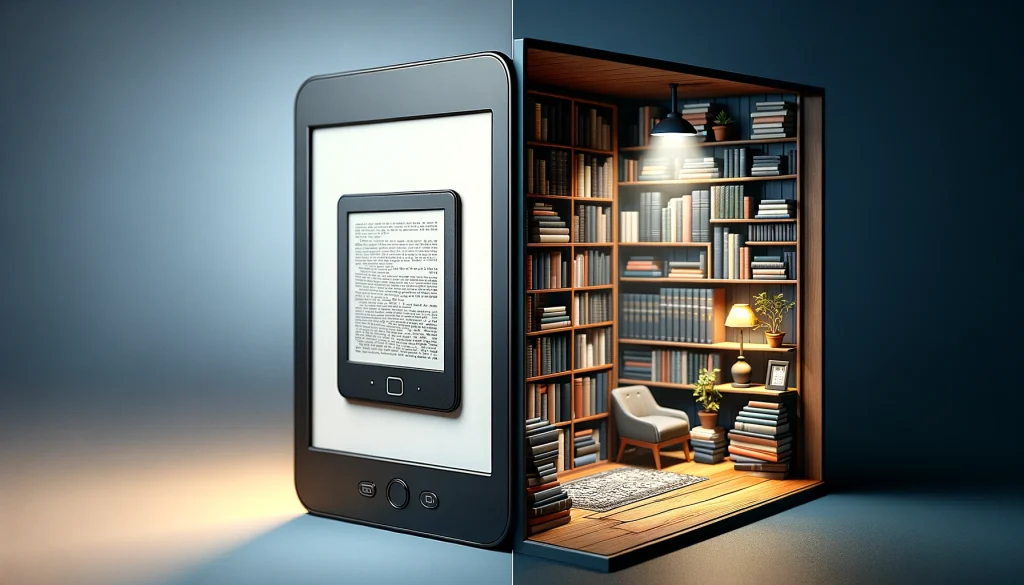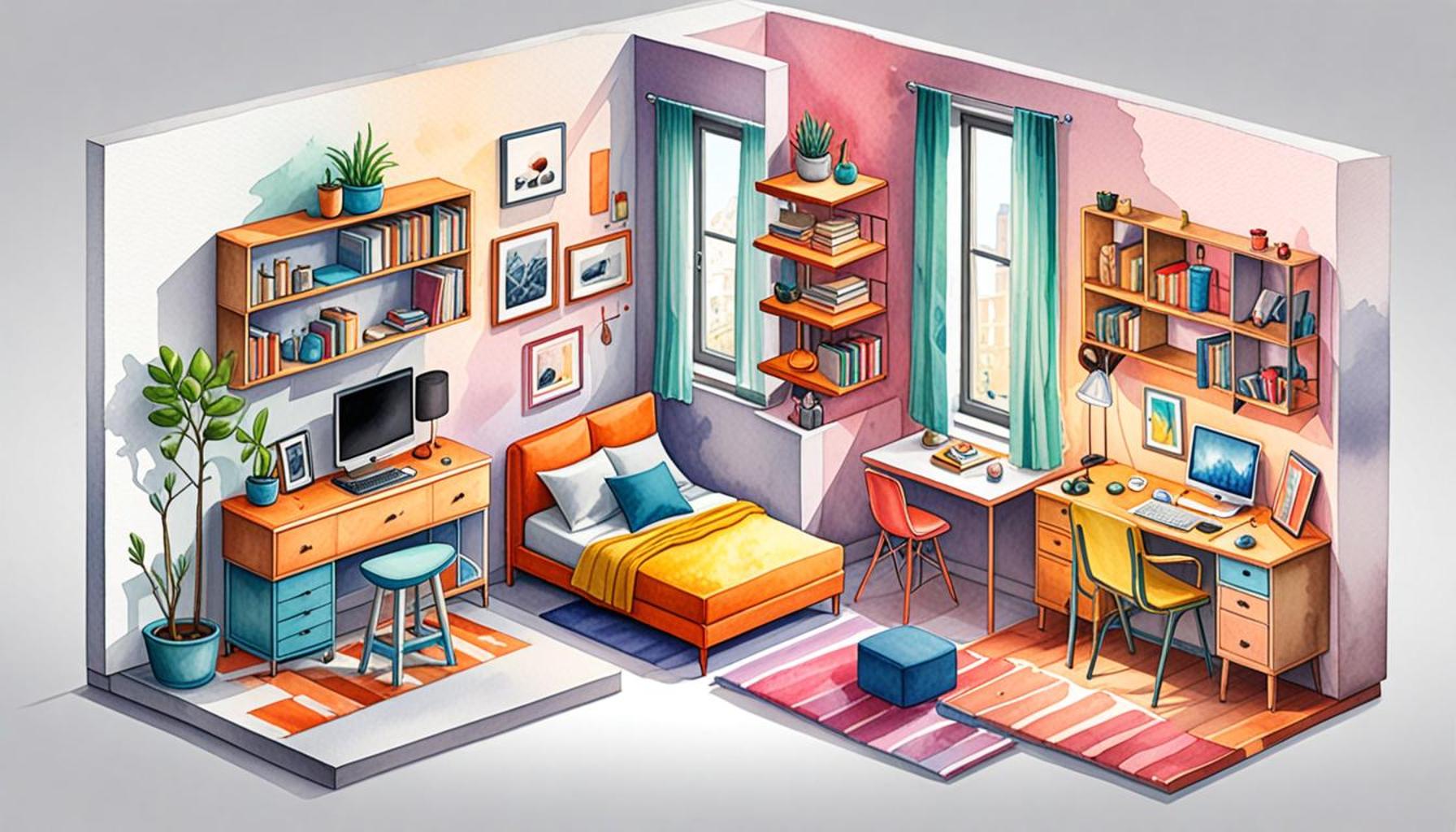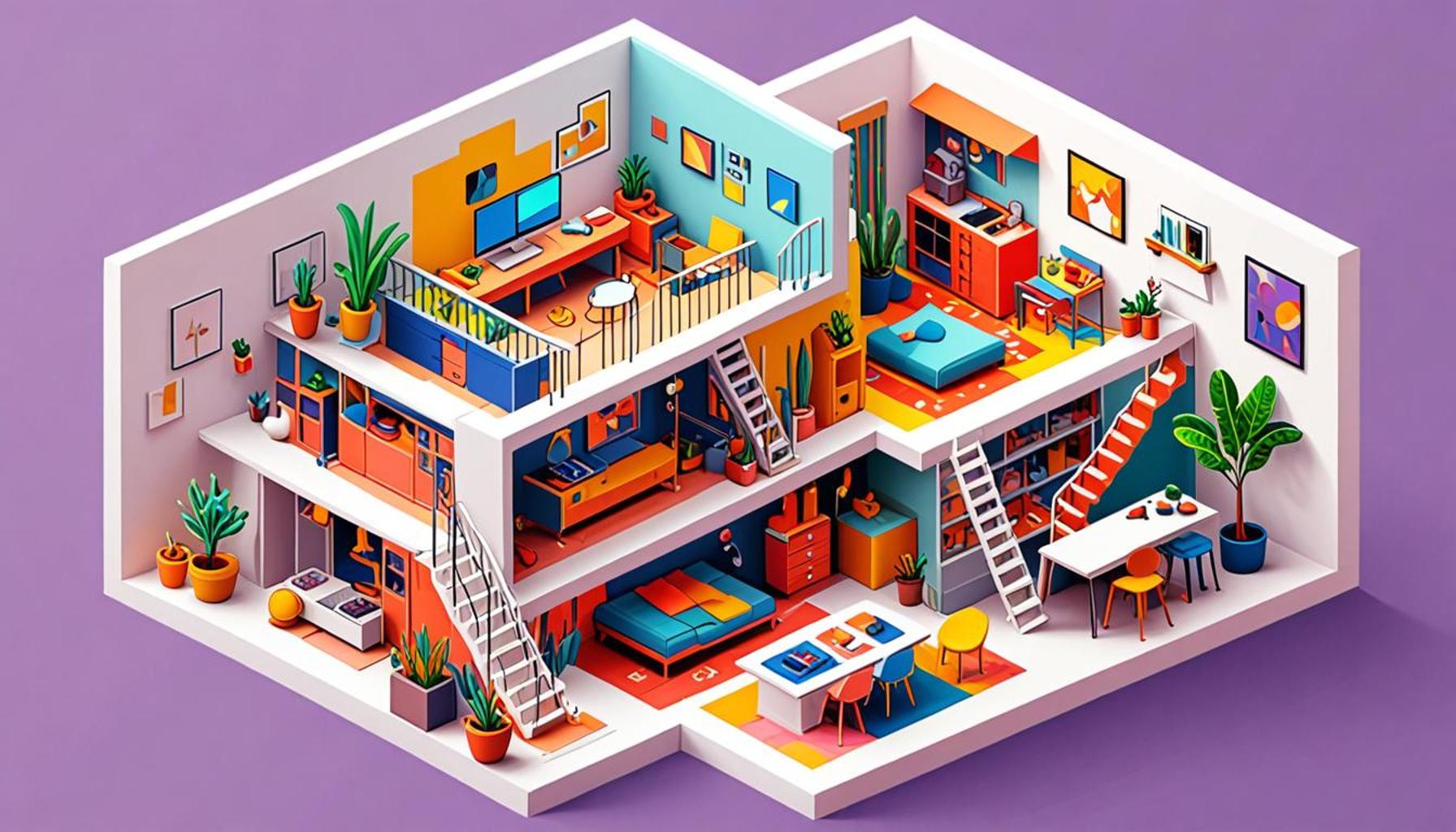Digital Minimalism: Optimizing Virtual and Physical Spaces in the Information Age

The Chaos of Modern Technology
In today’s fast-paced world, the blend of technology and daily life can create a chaotic environment. With countless devices and information vying for attention, many find themselves overwhelmed. As notifications buzz, emails flood in, and social media beckons, our ability to concentrate diminishes, leading to stress and dissatisfaction. The rise of constant connectivity and a barrage of information has resulted in a digital landscape that often feels more like a burden than a benefit.
Understanding Digital Minimalism
Digital minimalism emerges as a solution, helping individuals reclaim focus and enhance productivity. This philosophy advocates for a more intentional approach to technology, emphasizing quality over quantity. It’s not merely about reducing screen time but engaging with technology in a way that aligns with personal values and goals.
- Streamlining digital interactions: To begin, prioritize essential apps and tools that truly enhance your life. For instance, instead of having multiple social media platforms, consider focusing on one that best connects you with friends and family. By decluttering your digital space, distractions diminish, allowing for increased focus on what matters most.
- Creating intentional spaces: Design both your virtual and physical environments to promote clarity. This might involve organizing files on your computer for easy access, or decluttering your workspace at home to minimize distractions. A clean, organized area fosters a sense of calm and can dramatically improve productivity.
- Practicing mindfulness: Engage with technology in purposeful ways that foster better habits. This can be as simple as setting aside specific times for checking emails or social media, instead of allowing them to interrupt your day. Mindfulness practices can help you become more aware of how and why you use technology, enabling more intentional choices.
Embracing Awareness and Balance
The essence of this movement is not merely to cut back on technology usage but to cultivate an awareness of how these tools impact our lives. Understanding digital minimalism allows us to implement effective personal strategies that bring balance. For example, consider the tools you rely on daily—are they serving you, or are you merely reacting to them? Reflecting on this dynamic can lead to powerful shifts in your habits.
As we navigate the information age, it’s important to actively assess how technology influences our well-being. Small changes, like limiting notifications or deleting unused apps, can yield significant improvements in mental clarity. The journey starts with these deliberate practices, which can lead to a sense of liberation in your daily experiences.
Taking the First Steps
Are you ready to explore the transformative potential of digital minimalism? Consider adopting practices that prioritize your mental health and productivity. By aligning your digital habits with your values, you can reclaim your time and focus. The path towards digital minimalism is personal and unique, inviting you to take actionable steps toward a more intentional and fulfilling interaction with technology.

LEARN MORE: Click here to simplify your online presence
Reimagining Our Digital Habits
As we step into a future increasingly dominated by technology, one of the essential tenets of digital minimalism is to rethink our relationship with devices and online platforms. Just as a cluttered physical space can lead to feelings of anxiety and overwhelm, so too can a disorganized digital environment. Digital minimalism encourages individuals to assess not just what tools they are using, but how those tools align with their personal objectives and mental well-being.
Identifying Your Core Needs
The first step in this process is identifying which digital tools genuinely serve you. Ask yourself questions such as: What apps do I use daily? Which ones contribute positively to my life? And which ones serve only as time sinks? By taking inventory of your digital resources, you can begin to filter out distractions. This conscious recognition can greatly enhance both focus and productivity.
- Eliminate the unnecessary: Applications that provide little value can often feel like dead weight. For instance, if a specific social media platform fails to enrich your life or connects you with fewer friends compared to alternatives, it may be time to say goodbye.
- Utilize automation: Streamlining your digital space can also involve making use of automation tools that handle repetitive tasks. For example, setting up automatic bill payments or using scheduling tools can free up significant amounts of time.
- Prioritize quality over quantity: Focus on engaging with fewer platforms in a meaningful way, rather than spreading yourself thin across numerous accounts. Engaging deeply with just a couple of interests can foster a sense of fulfillment.
Designing Mindful Virtual Spaces
As you embark on your journey towards technology optimization, consider the importance of your virtual environments. A well-structured digital workspace can lead to greater efficiency. This might involve organizing files into clearly labeled folders or employing desktop backgrounds that encourage a sense of calm and focus. Regularly decluttering your digital spaces can prevent the build-up of unnecessary distractions.
Moreover, you can enhance your digital environments through thoughtful design. Simplifying browser bookmarks reduces clutter and makes navigating easier. Using a distraction-free writing tool can also enhance focus during writing tasks. These intentional design choices promote mental clarity, enabling you to allocate your cognitive resources more effectively in an age where attention is a scarce commodity.
In summary, embracing digital minimalism requires a commitment to reviewing not only the technology at our fingertips but also our online habits and interactions. By thoughtfully curating the digital elements of our lives, we can experience profound changes in how we engage with the world around us. The path to a more intentional, fulfilling relationship with technology is paved with the simple act of recognizing what genuinely matters.
| Advantages | Key Characteristics |
|---|---|
| Simplified Decision-Making | Eliminates clutter both digitally and physically, enabling clearer choices. |
| Enhanced Focus | Promotes mindfulness in interactions with technology and spaces. |
| Reduced Stress | Minimizes distractions, fostering a calming environment. |
| Improved Productivity | Streamlined digital tools enhance workflow and efficiency. |
In the realm of digital minimalism, every element in both your virtual and physical spaces holds significance. The approach focuses on strategically optimizing content presentations to minimize distractions and amplify vital information. As technology continues to evolve, embracing a minimalist mindset can lead to a profound transformation in how we engage with both our devices and our environments.By adopting clarity over chaos, individuals can cultivate a space for meaningful interactions, driving more intentional use of technology. This leads not only to enhanced mental well-being but also to a more organized existence that encourages creativity and innovation. As you explore the effects of digital minimalism further, consider its applications in your daily routine, breaking away from the overwhelm that technology often imposes.
DISCOVER MORE: Click here to delve deeper
Applying Digital Minimalism to Physical Spaces
While much focus on digital minimalism emphasizes virtual habits and online interactions, it is equally important to consider its implications for our physical environments. The concept of minimalism extends beyond screens and apps; it encompasses the spaces we inhabit and how we manage the interplay between our physical and digital lives. The clutter in our physical spaces can distract from productivity, just as digital disarray can disrupt our online experiences.
Creating a Clutter-Free Physical Environment
Adopting a minimalist mindset in physical spaces promotes clarity and tranquility. Start by evaluating your belongings and ask: Are these items essential? Do they bring me joy? This approach, reminiscent of the KonMari method, empowers individuals to eliminate excess and retain only what truly enhances their lives. A study by the American Psychological Association highlights the correlation between a cluttered environment and increased stress levels, underscoring the need for deliberate organization.
- Embrace functional furniture: Consider furniture that serves dual purposes, such as multi-functional desks with built-in storage. This not only saves space but also reduces visual clutter, enhancing focus.
- Incorporate nature: Introducing plants or natural elements into your workspace can improve air quality and elevate mood. Research indicates that biophilic design—integrating nature into our environments—can lead to better cognitive function and emotional well-being.
- Designate zones: Creating specific areas in your home for work, relaxation, and recreation helps establish boundaries. A clearly defined workspace can lead to enhanced productivity, signaling to your mind that it’s time to focus.
Integrating Digital and Physical Practices
To fully realize the benefits of digital minimalism, one must consider how digital habits influence physical environments and vice versa. For instance, reducing screen time can lead to more engaging physical activities, whether it’s reading a book, nurturing a hobby, or socializing in-person with friends. Integrating mindfulness practices, such as meditation or journaling, into your physical routine has also shown to reduce reliance on digital distractions.
Tools like productivity apps can synchronize your digital and physical tasks smoothly. For example, using a planner app can help you keep track of both online meetings and offline commitments, fostering a harmonious balance between your virtual interactions and real-world responsibilities. Additionally, managing emails and notifications can free up physical space by allowing you to declutter your mind, focusing on what truly matters.
The Long-Term Vision
Adopting digital minimalism as a lifestyle is not merely about decluttering; it is about cultivating a long-term vision for how we engage with technology and our physical surroundings. By fostering an environment that prioritizes essentialism, individuals can create spaces that reflect their values and support a balanced life. Economic factors, coupled with the rise of remote work, highlight the urgency of this transformation. Recent studies show that telecommuters often face challenges in separating work-life balance due to cluttered home office environments.
Ultimately, understanding the synergy between our virtual and physical worlds is vital for optimizing our lives in this information age. As we consciously curate both our digital tools and physical spaces, we pave the way towards a more intentional existence, promoting mental clarity, reduced stress, and enhanced productivity.
DIVE DEEPER: Click here to discover more
Conclusion
In today’s hyper-connected world, digital minimalism emerges as a transformative approach to harmonize our virtual and physical spaces. By consciously evaluating our digital consumption and decluttering our physical environments, we create a blueprint for a more intentional lifestyle. The principles of minimalism encourage not only a reduction in excess, whether in technology or material possessions, but also promote mental clarity and emotional well-being.
Implementing changes such as utilizing multifunctional furniture, creating designated zones for different activities, and integrating elements of nature can significantly enhance one’s physical workspace. Coupled with mindful digital practices—such as reducing screen time and selectively managing notifications—individuals can strike a balance that fosters productivity and satisfaction in their daily lives.
As remote work continues to shape the professional landscape, the need for strategies that cultivate work-life balance grows increasingly vital. Evidence suggests that thoughtfully organized spaces lead to improved focus, reduced stress, and enhanced overall happiness. This holistic approach not only maximizes efficiency but invites a sense of joy through intentionality in both our digital and physical realms.
Ultimately, embracing digital minimalism encourages us to reflect on our values and relationships with both technology and our material surroundings. It presents an opportunity to curate lives filled with meaning, purpose, and clarity—enabling us to thrive in the information age. As you embark on your own journey towards minimalism, remember that every thoughtful choice, whether digital or physical, paves the way toward a more fulfilling existence.


